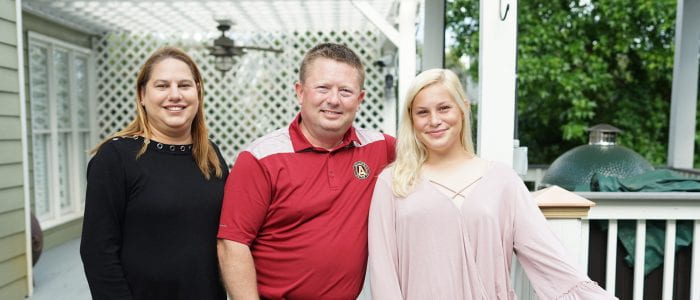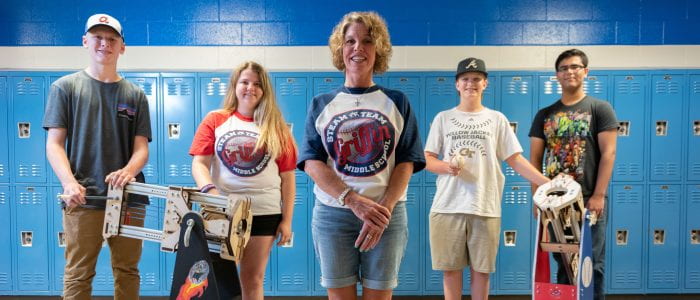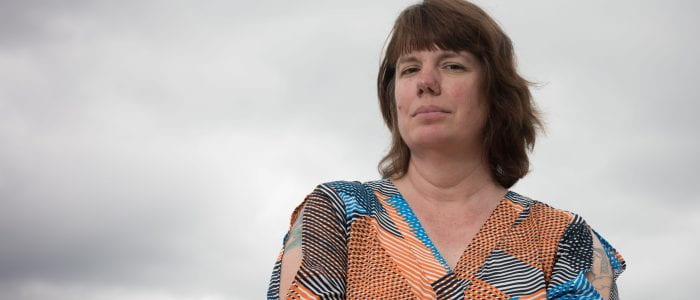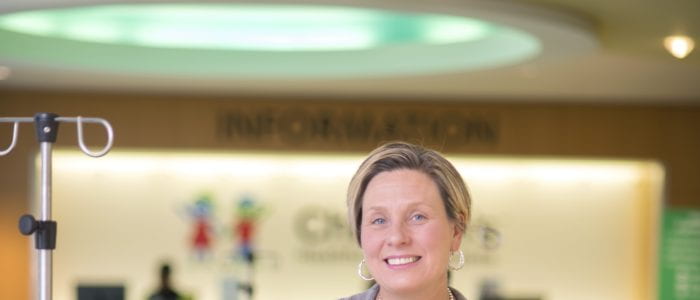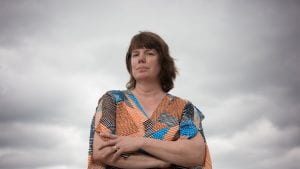The Georgia Tech Library will pilot a new educational series focused on integrating visual arts into academic courses during Fall 2014 and Spring 2015.
Communication Through Art, a collaborative effort between the Library and local artists, facilitates the creation of visual art projects that nurture student creativity and student-faculty interaction in the classroom.
This program is funded in part by a grant from GT-Fire, a fund sponsored by the Offices of the Provost and Executive Vice President for Research at Georgia Tech. GT-Fire supports potentially transformative innovation and research ideas.
Faculty can apply online for the Communication Through Art Program to have their course considered for incorporating one of the following artistic methods into their course assignment:
 Linocut Relief Printmaking :: example 1
Linocut Relief Printmaking :: example 1
(2) 80 minute class periods or (3) 50 minute class periods, plus some outside-of-class time for the students to work on their images. Printmaking creates bold, dynamic graphics in two colors (ink color and paper color). Relief printing comes from a long line of using images and text to communicate quickly to a broad audience.
 Coptic Bookbinding :: example 1 – example 2 – example 3
Coptic Bookbinding :: example 1 – example 2 – example 3
(2) 80 minute class periods or (3) 50 minute class periods, plus some outside-of-class time for developing the book’s content. Most similar to a traditional “book”, with bindings along the spine. Each sub-section (signature) of the book can contain text, images, or other content by each of the students which the students can then combine (bind) together in a compilation (one for each student).
 Accordion Style Book :: example 1 – example 2
Accordion Style Book :: example 1 – example 2
(1) 80 minute class periods or (1-2) 50 minute class periods, including some time to work on content/images. This folding-focused book style works well to accentuate “lengths” of related data … for instance, facts about the cities along a river, details about events on a timeline, a travelogue, or a sequence of changes or transformations (ex, mitosis). It can be read by page spread or all at once (horizontally, vertically). It can also have pop-up elements.
 One Sheet Book + Pamphlet Binding :: example 1 – example 2 – example 3
One Sheet Book + Pamphlet Binding :: example 1 – example 2 – example 3
(1) 80 minute class periods or (1) 50 minute class periods, including some time to work on content/images. These books are quick and simple forms that can communicate in powerful ways. Classic “pamphlet” essays, zines, and “maps” of various kinds work well with these forms. It can also have pop-up elements or flaps.
 Collage (or Zine focus) :: example 1 – example 2
Collage (or Zine focus) :: example 1 – example 2
(1-2) 80 minute class periods or (1-2) 50 minute class periods, including time to work on content/images. Students can use images and text from the public domain, and combine them with their own elements/content to critique/annotate/respond to the found content (or work with completely original content).
Examples of Visual Art Classroom Integration:
Class assignment: Study of Chaucer’s Literary Work
Visual Arts Component: Incorporated Medieval style book-binding with an analysis of Chaucer’s literary work
Faculty Testimonial:
“Through integrating the applied and visual arts in a writing-intensive literature course, my students and I came to a better understanding of how research, problem-solving, drafting, review, and prototyping are processes common to a wide range of human endeavors. It also hopefully provided students with a more complete picture of the variety of intellectual and physical labor that makes art as well as technology possible.”
– Dr. Robin Wharton, Former Assistant Director of Writing and Communication
Class assignment: Study of the Labor Movement
Visual Arts Component: History of the Labor Movement incorporated with relief printing.
Faculty Testimonial:
“I teach about many different types of communication, and visual texts are extremely important to literacy skills and effective communication. In addition, I have found that students at Georgia Tech enjoy the opportunity to expand their repertoire of experiences–creative projects really show their range of abilities and interests. The students were able to compare process-oriented projects that are both materially and digitally oriented; they were able to understand print making from an experiential perspective.”
-Dr. Joy Bracewell, Literature Media & Communication
Partnering Organization: ARTIST: Ashley L. Schick
Ashley L. Schick makes works on paper and artists’ books. The daughter of a biology teacher and an electrical engineer, the imagery in her work spans from natural and organic forms to industrial infrastructure and debris. She currently works as the Studio Program Director for One Love Generation, a non-profit organization empowering teens to inspire positive change through art, service, and awareness. Ms. Schick was an artist’s assistant to sculptor Brian Dettmer for over two years, after an initial period working through his grant from the Museum of Contemporary Art of Georgia’s Working Artist Project.
From the fall of 2011 to the fall of 2013, she was a resident in the Creatives Project’s Artist-In-Studio Residency Program. In 2012, she co-founded Straw Hat Press, a fine art publishing and contract printshop at the Goat Farm Arts Center, with Laura Cleary and Shaun McCallum. Additionally, Ms. Schick has taught many workshops, and completed residencies at the Haystack Mountain School of Crafts in Maine and at the Skopelos Foundation for the Arts in Greece. Her work has been exhibited nationally and internationally. She currently lives and works in Atlanta, GA. Find more information and images of work at: www.ashleylschick.com.
About the Project:
The Everyday Georgia project is exploring the lives of those touched by Georgia Tech’s research and technology initiatives. Through the coupling of photographs and interviews, the project shares the personal stories of Georgians – their challenges and accomplishments, and their vital role in creating the next at Georgia Tech. The interviews are also a valuable way to give agency and additional context to the subjects documented in the photographs.
The Institute for People and Technology at Georgia Tech will showcase the portraits and stories during a public exhibition in Fall 2018, and the project will have an online presence through the Georgia Tech Library with support from the Institute of Museum and Library Services (IMLS). The Georgia Tech Library will preserve audio and photos in its Special Collections and Archives, which maintains the historical records of the Institute. These interviews will provide valuable insight into the effects of Georgia Tech’s innovations in practice.
Everyday Georgia is made possible by the Institute for People and Technology at Georgia Tech, with sponsorship by the Georgia Tech Library’s IMLS-funded Communication through Art (Sparks Ignition Grant SP-02-16-0031-16) program in partnership with the Georgia Tech Office of the Arts Creative Curricular Initiatives program.
Featured Stories:





Partners:
Photographers:
 Allison Carter
Allison Carter
Allison Carter is originally from Ringgold, Georgia. She has lived in and documented communities all across the Southeast while working as a photojournalist for newspapers. Now, she is a photographer at Georgia Tech and hosts a podcast called Not Your Little Lady. In her free time she likes to bake, learn languages, travel, be outside, explore Atlanta and spend time with her cat named Wednesday.
 Sean McNeil
Sean McNeil
Sean McNeil is a staff photographer at GTRI. Previously, he was a photo editor at CNN and a Telly award-winning director of photography at Presslaunch, a Florida-based commercial film production company. Sean was also a photojournalist for the Daytona Beach News-Journal, where he shot everything from pro-sports to presidential campaigns. He’s a USAF vet, who first took up photography while stationed in Turkey. Sean lives OTP with his wife Kari, their new son, young daughter, and pup Roxy. He likes blazing mountain bike trails, craft beer and Trini food.
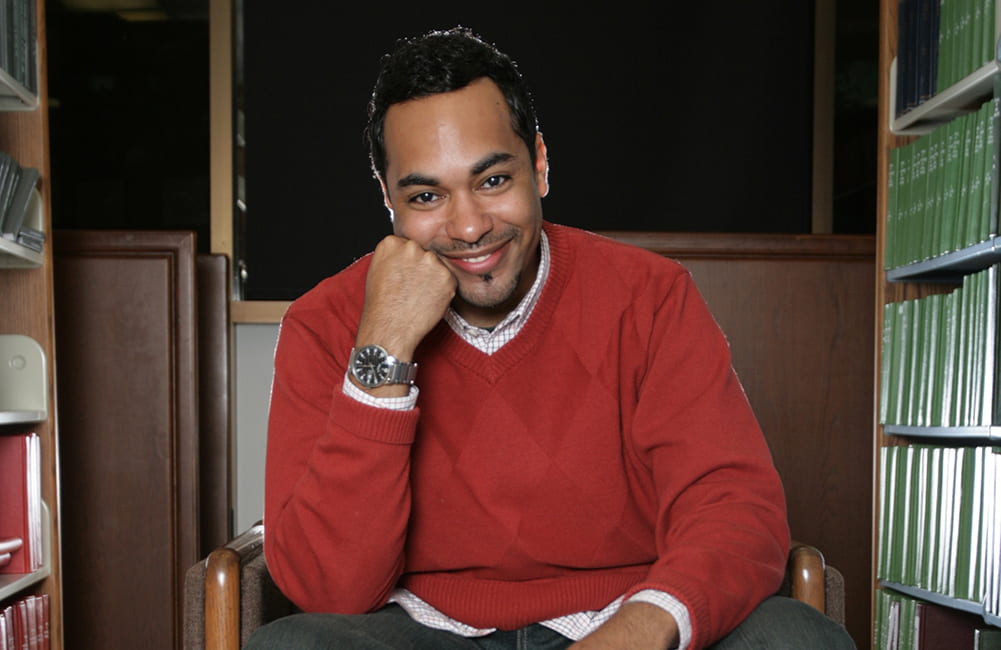 Jerrold Mobley
Jerrold Mobley
Photographer Jerrold Mobley is interested in personal storytelling and the documenting of fragile societal trends through his camera lens. An autodidact that picked up photography as a teen, Jerrold developed his eye via assistant gigs with local professionals. He launched Pixelegant as a wedding photography business in 2004, mixing traditional and journalistic approaches, and became known for his highly stylized custom albums. Today his work is purely personal projects, having removed himself from the service side of photography in 2009. When Jerrold is not shooting, he is pleased to serve as an Information Associate with the Georgia Tech Library.
Interviewers:
Alyson Powell Key
Alyson Powell Key is the creator of Everyday Georgia and the Marketing Communications Manager for the Institute for People at Technology (IPaT) at Georgia Tech. She received her Bachelor’s degree in Broadcasting from the University of Nebraska at Omaha and has worked as a news producer, videographer, and video editor in television markets in the Midwest and South. More recently, Alyson developed marketing solutions (websites, e-newsletters, and media strategies) for non-profit organizations and small businesses. She currently leads IPaT’s Marketing Communications team—creating publications, website and social media content, planning events, and providing brand management and marketing strategy. Alyson also writes and produces the monthly IPaT Insider e-newsletter, which highlights IPaT’s research, news, and events. Outside of work, Alyson enjoys exploring new cities and writing.
Alison Valk
Need Bio






